Alphan Şahin
Interference-Free Backscatter Communications for OFDM-Based Symbiotic Radio
Aug 17, 2024Abstract:This study proposes an orthogonal frequency division multiplexing (OFDM) based scheme to achieve interference-free backscatter communications (BC) in a symbiotic radio system. In specific, we propose three frequency shift keying (FSK) based backscatter modulation schemes to shift the primary signal, i.e., the OFDM symbols transmitted from a base station (BS), in the frequency domain to transmit its information. Symbiotically, the BS empties specific subcarriers within the band so that the received frequency-shifted signals from the backscatter device and the primary signal are always orthogonal. The first scheme relies on the combination of on-off keying (OOK) within the FSK modulation while the second and the third schemes are based on the conventional FSK modulation with different in-band null-subcarrier allocation. These schemes allow the use of non-coherent detection at the receiver which addresses the channel estimation challenge for the signals arriving from a backscatter device. We derive the bit-error rate performance of the detector theoretically. The comprehensive simulations show that the proposed approach achieves a lower bit-error rate up to 10-4 at 30 dB with BC by eliminating direct link interference.
Waveforms for Computing Over the Air
May 27, 2024
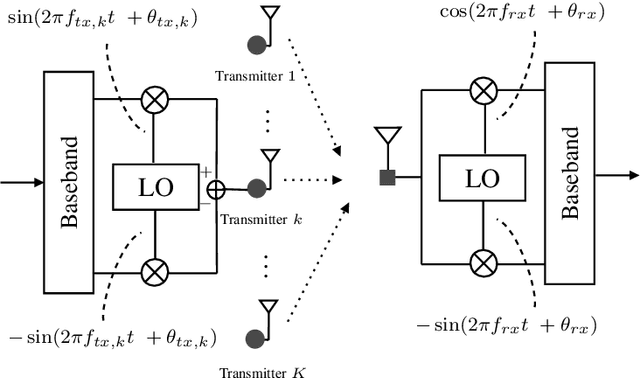
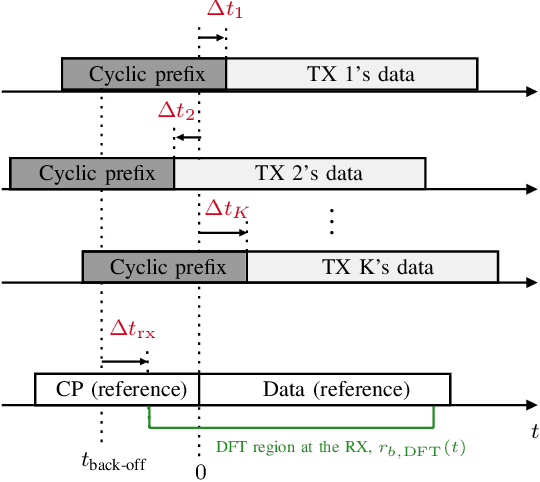

Abstract:Over-the-air computation (AirComp) leverages the signal-superposition characteristic of wireless multiple access channels to perform mathematical computations. Initially introduced to enhance communication reliability in interference channels and wireless sensor networks, AirComp has more recently found applications in task-oriented communications, namely, for wireless distributed learning and in wireless control systems. Its adoption aims to address latency challenges arising from an increased number of edge devices or IoT devices accessing the constrained wireless spectrum. This paper focuses on the physical layer of these systems, specifically on the waveform and the signal processing aspects at the transmitter and receiver to meet the challenges that AirComp presents within the different contexts and use cases.
Digital Twins for Supporting AI Research with Autonomous Vehicle Networks
Apr 01, 2024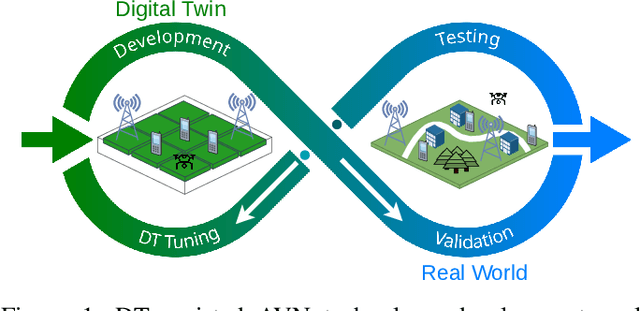
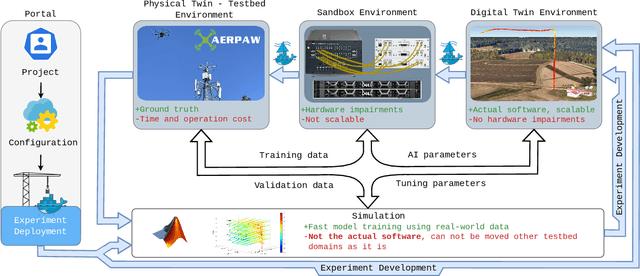
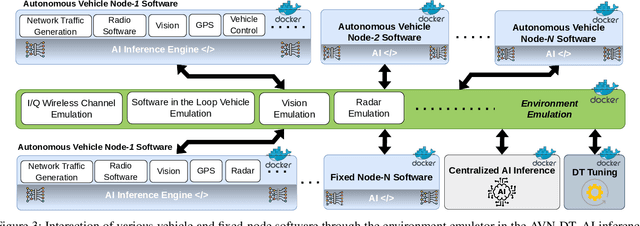
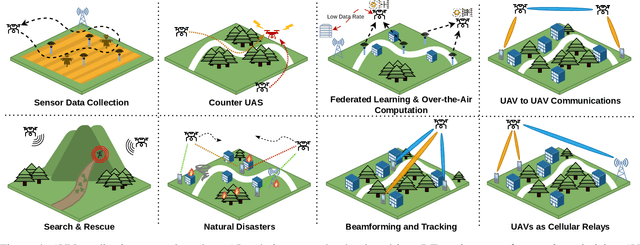
Abstract:Digital twins (DTs), which are virtual environments that simulate, predict, and optimize the performance of their physical counterparts, are envisioned to be essential technologies for advancing next-generation wireless networks. While DTs have been studied extensively for wireless networks, their use in conjunction with autonomous vehicles with programmable mobility remains relatively under-explored. In this paper, we study DTs used as a development environment to design, deploy, and test artificial intelligence (AI) techniques that use real-time observations, e.g. radio key performance indicators, for vehicle trajectory and network optimization decisions in an autonomous vehicle networks (AVN). We first compare and contrast the use of simulation, digital twin (software in the loop (SITL)), sandbox (hardware-in-the-loop (HITL)), and physical testbed environments for their suitability in developing and testing AI algorithms for AVNs. We then review various representative use cases of DTs for AVN scenarios. Finally, we provide an example from the NSF AERPAW platform where a DT is used to develop and test AI-aided solutions for autonomous unmanned aerial vehicles for localizing a signal source based solely on link quality measurements. Our results in the physical testbed show that SITL DTs, when supplemented with data from real-world (RW) measurements and simulations, can serve as an ideal environment for developing and testing innovative AI solutions for AVNs.
A Self-Healing Mesh Network without Global-Time Synchronization
Jan 26, 2024Abstract:In this paper, we propose a slot-based protocol that does not rely on global-time synchronization to achieve a self-healing mesh network. With the proposed protocol, each node synchronizes with its neighbors locally by adjusting its time to transmit based on the reception instant of a decoded beacon signal. Also, it determines its slots without any coordinator to avoid collisions. Finally, to communicate the messages over the mesh network, it identifies the forwarding nodes on the shortest path without knowing the entire communication graph. We show that the proposed protocol can effectively resolve collisions over time while enabling nodes to synchronize with each other in a distributed manner. We numerically analyze the performance of the proposed protocol for different configurations under a realistic channel model considering asymmetrical links. We also implement the proposed method in practice with \ac{LoRa} devices. We demonstrate that the nodes adapt themselves to changes in the network and deliver a message from a sensing node to a reference node via multi-hop routing.
A Millimeter-Wave Software-Defined Radio for Wireless Experimentation
Feb 16, 2023
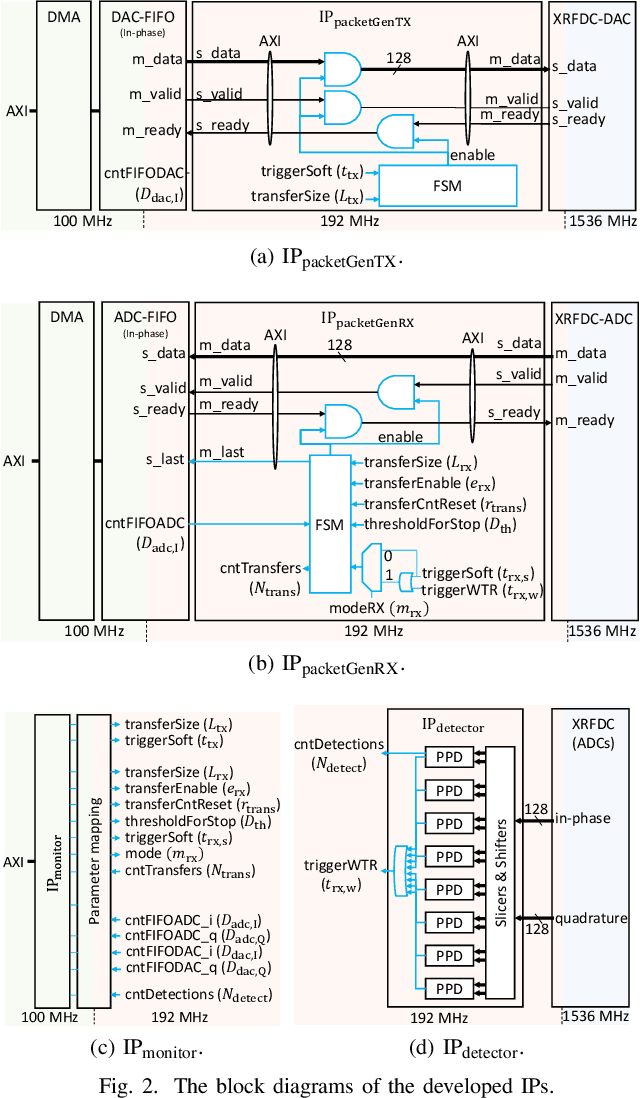
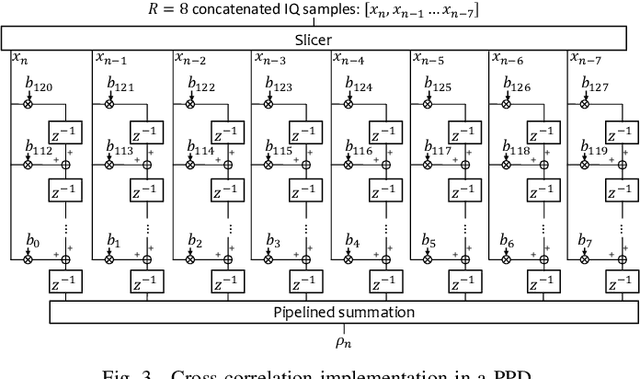
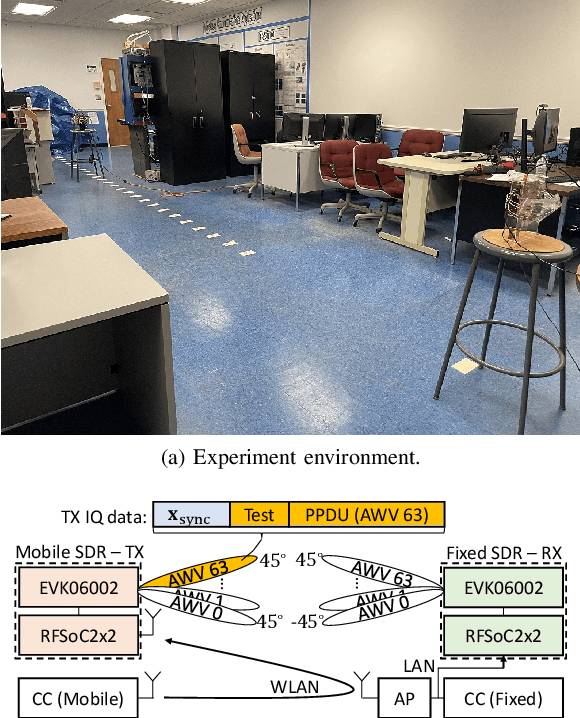
Abstract:In this study, we propose a low-cost and portable millimeter-wave software-defined radio (SDR) for wireless experimentation in the 60 GHz band. The proposed SDR uses Xilinx RFSoC2x2 and Sivers EVK06002 homodyne transceiver and provides a TCP/IP-based interface for companion computer (CC)-based baseband signal processing. To address the large difference between the processing speed of the CC and the sample rate of analog-to-digital converters, we propose a method, called waveform-triggered reception (WTR), where a hard-coded block detects a special trigger waveform to acquire a pre-determined number of IQ samples upon the detection. We also introduce a buffer mechanism to support discontinuous transmissions. By utilizing the WTR along with discontinuous transmissions, we conduct a beam sweeping experiment, where we evaluate 4096 beam pairs rapidly without compromising the flexibility of the CC-based processing. We also generate a dataset that allows one to calculate physical layer parameters such as signal-to-noise ratio and channel frequency response for a given pair of transmit and receive beam indices.
 Add to Chrome
Add to Chrome Add to Firefox
Add to Firefox Add to Edge
Add to Edge